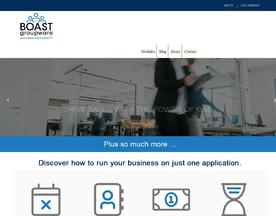Have you ever found yourself in a sales meeting, armed with a great product, but somehow the deal just didn’t close? You’re not alone. Sales is a challenging field, where understanding your customer’s needs and aligning your product accordingly is key. This is where MEDPICC or MEDDPICC comes in, a powerful framework that has revolutionized most sales reps’ strategies across industries.
MEDDPICC stands for Metrics, Economic Buyer, Decision Criteria, Decision Process, Paper Process, Identify Pain, Champion, and Competition. It’s a comprehensive approach that ensures you’re not just selling a product, but you’re solving a problem for your customer in a way that benefits both of you.
In this post, I’m going to dive deep into each component of MEDPICC, show you how to apply it effectively, and share insights from industry experts. Whether you’re a seasoned sales professional or new to the field, understanding and implementing MEDPICC can transform your sales approach and drive success.
Ready to revolutionize your sales strategy? Let’s get started!
MEDDPICC: A Brief Overview
Metrics: Quantifying the impact of your solution.
Economic Buyer: Identifying who makes the buying decisions.
Decision Criteria: Understanding what factors influence the final decision.
Decision Process: Navigating the customer’s decision-making process.
Paper Process: Managing the documentation and approval process.
Identify Pain: Uncovering the customer’s primary challenges.
Champion: Building relationships with influencers within the customer’s organization.
Competition: Understanding and addressing your competition.
Key Points Summary:
- MEDPICC is a comprehensive sales strategy framework.
- It involves understanding and aligning with various aspects of the customer’s decision-making process.
- This approach can significantly enhance sales effectiveness and success.
- MEDPICC, is a sophisticated Sales Qualification Methodology, used by 10 of the top 10 SaaS/Software players globally

MEDPICC in Detail
Metrics: Quantifying Impact and Value
The ‘Metrics’ component of MEDPICC is all about quantifying the impact your solution has on a customer’s business. It’s not just about your product’s features; it’s about how those features translate into tangible benefits for the customer.
Whether it’s doing more, closing deals, increasing revenue, reducing costs, or saving time, understanding and articulating these success metrics is key.
- How to Implement: Identify specific, measurable outcomes that your solution can deliver. Use data and case studies to back up your claims.
- Benefits: By focusing on metrics, you tailor your pitch to the customer’s bottom line, making your product more appealing.
Economic Buyer: Identifying the Decision-Maker
The Economic Buyer is the person who has the final say in the end user purchasing decision. They are often different from the users of your product. Understanding who this person is and what they care about is crucial.
- How to Implement: Research and identify the key decision-makers in the organization. Understand their goals and challenges.
- Benefits: Directing your efforts towards the Economic Buyer increases the efficiency of your sales process and improves chances of closing the deal.
Decision Criteria: Understanding the Customer’s Requirements
This refers to all the criteria or set of standards or requirements the customer uses to evaluate your solution. Knowing these criteria helps you position your product more effectively.
- How to Implement: Engage with the customer to uncover these criteria. Tailor your presentations and demos to meet these specific points.
- Benefits: Aligning with the customer’s decision criteria increases your product’s relevancy and appeal.
Decision Process: Charting the Course of Purchase
Understanding the customer’s decision-making process helps you to solution aligns your sales strategy with their buying journey. This involves knowing each step the customer takes in buying process from evaluation to the purchase decision.
- How to Implement: Map out the customer’s decision-making process. Identify key milestones and decision points.
- Benefits: This knowledge allows you to provide timely information and support, smoothing the path to a sale.
Paper Process: Navigating the Documentation
The Paper Process involves the documentation and administrative tasks required to finalize a sale. It’s important to understand step by step guide this process to avoid delays in closing the deal early.
- How to Implement: Learn about the customer’s procurement process. Prepare and organize necessary documents in advance.
- Benefits: Streamlining the Paper Process can significantly speed up the sales cycle.
Identifying Pain: Solving Real Problems
Identifying the customer or prospect’s pain points is crucial. It’s not about what you’re selling, but how it solves a problem or improves the customer’s situation.
- How to Implement: Conduct thorough research and ask probing questions to uncover these pains. Show empathy and understanding.
- Benefits: Addressing pain points creates a more compelling value proposition and builds trust with the customer.
Champion: Your Ally Within the Organization
A Champion is someone inside or outside council the customer’s organization executive team who advocates for your solution. Cultivating such relationships can be pivotal in influencing the purchase decision-making process.
- How to Implement: Identify potential Champions and build relationships with them. Provide them with the information and support they need to advocate effectively.
- Benefits: Having a Champion increases your credibility within the customer’s organization and can provide valuable inside information.
Competition: Staying Ahead of Rivals
Understanding your competition means you can position your product more effectively for different buyers. It’s about knowing their strengths and weaknesses and differentiating your offering accordingly.
- How to Implement: Conduct thorough competitive analysis. Develop a unique selling proposition (USP) that sets you apart.
- Benefits: A strong understanding of the competition allows you to preemptively address comparisons and objections.
Key Points Summary:
- MEDPICC covers every aspect of the sales process, from understanding the customer’s needs to navigating the administrative hurdles.
- Implementing each component requires research, empathy, and strategic planning.
- Mastering MEDPICC leads to more effective sales pitches, stronger customer relationships, and ultimately, more successful sales outcomes.

Integrating MEDPICC into Your Sales Training and Development Programs
Incorporating the MEDPICC framework into your organization’s enterprise sales training and development programs is crucial for fostering a culture of strategic thinking and customer-centric selling. Here are some key strategies and tips to effectively integrate MEDPICC into your enterprise sales training initiatives:
Curriculum Development: Crafting the Right Training Content
- Understand MEDPICC Components: Start by ensuring that the training curriculum thoroughly covers each aspect of MEDPICC. Use real-life scenarios and case studies to illustrate how each component can be applied in various sales situations.
- Interactive Learning Modules: Develop interactive modules that encourage active participation. Include role-playing exercises, simulations, and group discussions to reinforce learning.
- Continuous Learning Approach: Integrate MEDPICC into ongoing learning programs, not just one-time training sessions. This could involve regular workshops, webinars, and refresher courses.
Customized Workshops: Tailoring Training to Team Needs
- Assess Team Proficiency: Conduct assessments to understand your team’s current proficiency with MEDPICC principles. Tailor workshops to address specific gaps or areas of improvement.
- Hands-On Practice: Design workshops that allow sales teams to practice MEDPICC strategies in a controlled environment. For example, set up mock sales pitches where team members can apply different components of the framework.
- Expert Facilitation: Bring in experts or experienced sales professionals who have successfully implemented MEDPICC. Their insights and real-world experiences can provide valuable learning.
Reinforcing MEDPICC in Daily Sales Activities
- Integration with Sales Tools: Ensure that your CRM and other sales tools support the MEDPICC framework. For instance, customize CRM fields to track information relevant to each MEDPICC component.
- Regular Coaching and Feedback: Implement a coaching system where sales managers regularly review MEDPICC application in sales activities and provide constructive feedback.
- Recognition and Incentives: Recognize and reward team members who effectively use MEDPICC in their sales processes. This could be through acknowledgment in team meetings, bonuses, or awards.
Measuring Impact and Making Adjustments
- Track Performance Metrics: Monitor key sales metrics to measure the impact of MEDPICC training. Look for improvements in sales cycle length, conversion rates, and customer satisfaction.
- Solicit Feedback from the Team: Regularly ask for feedback from your sales team about the training. Understanding their perspectives can help in making the training more effective and relevant.
- Iterative Improvement: Continuously refine the training program based on performance data and feedback. Sales is a dynamic field, and your training should evolve to keep pace with changing trends and challenges.
Key Points Summary:
- Developing a comprehensive curriculum that covers all aspects of MEDPICC is crucial.
- Customized workshops and hands-on practice sessions are effective in reinforcing learning.
- Integrating MEDPICC into daily sales activities and tools ensures continuous application of the framework.
- Regular coaching, feedback, and recognition are important to encourage and sustain the use of MEDPICC.
- Continuously measuring the impact and adjusting the training program ensures its ongoing relevance and effectiveness.
By thoughtfully integrating MEDPICC into your sales training and development programs, you not only enhance your sales rep and team’s sales skills but also embed a strategic, customer-focused approach in your sales reps and organization’s sales culture. This investment in training and development is key to building a high-performing sales team equipped to navigate the complexities of modern selling environments.

FAQ
Q1: What is MEDPICC?
MEDPICC is a comprehensive sales methodology that stands for Metrics, Economic Buyer, Decision Criteria, Decision Process, Paper Process, Identify Pain, Champion, and Competition. It’s designed to help sales professionals understand and align with various aspects of their customer’s decision-making and buying process, ensuring a more effective and customer-centric sales approach.
Q2: Why is understanding the Economic Buyer important?
Understanding the Economic Buyer is crucial because they are the person who ultimately approves the purchase. Knowing their priorities, challenges, and decision-making criteria allows you to tailor your sales pitch and demonstrate how your product or service addresses their specific needs.
Q3: How can I identify a Champion within a customer’s organization?
To identify a Champion, look for someone who understands and believes in the value of your solution and has the influence to advocate for it within their organization. Building a strong relationship with them, understanding their goals, and providing them with the necessary tools and information to support your new solution can be key to gaining their advocacy.
Q4: What are some common mistakes in applying MEDPICC?
Common mistakes include not fully researching each component, overlooking the importance of the Paper Process, failing to effectively identify the Economic Buyer, and underestimating the competition. Another mistake is not continuously updating and adapting the approach as the sales environment and customer needs evolve.
Q5: How does MEDPICC differ from other sales methodologies?
MEDPICC differs from other methodologies in its comprehensive approach to the sales process. It considers not just the direct selling points but also delves into understanding the customer’s internal decision-making processes, administrative aspects, and competitive landscape, providing a more holistic view of the sales environment.
Q6: Can MEDPICC be used in any industry?
Yes, MEDPICC is versatile and can be adapted to suit various industries. Its principles are universal in understanding customer needs, decision-making processes, and competitive dynamics, making it applicable across different market sectors.
Q7: How do Metrics play a role in the sales process?
Metrics are crucial in demonstrating the tangible value of a product or service. They provide quantifiable evidence of how a solution can impact a customer’s business, such as through cost savings, revenue growth, or efficiency improvements, making the value proposition more compelling.
Q8: What is the significance of the Paper Process in MEDPICC?
The Paper Process is significant as it encompasses the legal departments administrative and documentation aspects of closing a sale. Understanding and efficiently managing this paper process step can prevent delays and complications in finalizing a deal, thus shortening the sales cycle.
Q9: How does identifying Pain influence the sales strategy?
Identifying the customer’s Pain points allows for a more targeted sales strategy. It enables sales professionals to present their solution as a direct answer to specific challenges or problems faced by the customer, thereby making the sales pitch more relevant and compelling.
Q10: How can I stay ahead of the Competition using MEDPICC?
Using MEDPICC to stay ahead of the competition involves thoroughly understanding your competitors and other solutions’ strengths and weaknesses and differentiating your own solution accordingly. It also means continuously updating your strategy based on competitive dynamics and ensuring your value proposition remains unique and compelling.

Software Tools for Implementing MEDPICC
To effectively implement the MEDPICC methodology in your sales strategy, leveraging the right tools is crucial. These tools can help in organizing information, tracking progress, and ensuring that each component of MEDPICC is addressed effectively. Here are some essential software tools, along with reasons why they are useful in applying the MEDPICC framework:
Salesforce: The Leading CRM Platform
Usefulness for MEDPICC: Salesforce is a comprehensive customer relationship management (CRM) tool that can track all customer interactions. It’s particularly useful for managing the Economic Buyer and Decision Process components of MEDPICC, as it helps in identifying key decision-makers and tracking the customer’s journey.
Key Features: Advanced analytics, customer data management, lead tracking, and customizable sales reports.
HubSpot Sales Hub: Streamlining Sales Processes
Usefulness for MEDPICC: HubSpot Sales Hub is ideal for managing the Paper Process and Identifying Pain points. It offers tools for email tracking, meeting scheduling, and sales automation, which streamline communication and documentation.
Key Features: Email tracking, sales automation, deal tracking, and meeting scheduling.
LinkedIn Sales Navigator: Targeting the Right People
Usefulness for MEDPICC: LinkedIn Sales Navigator is excellent for identifying and connecting with Economic Buyers and Champions. It provides advanced search capabilities to find the right people in an organization and insights to engage with them effectively.
Key Features: Advanced search, lead recommendations, InMail messages, and real-time sales updates.
Tableau: Data Visualization for Metrics
Usefulness for MEDPICC: Tableau is a powerful data visualization tool, essential for the Metrics component. It can help in presenting data and analytics in a compelling way, showcasing the impact of your solution in measurable terms.
Key Features: Interactive dashboards, data blending, and real-time data analysis.
ZoomInfo: Comprehensive B2B Database
Usefulness for MEDPICC: ZoomInfo provides access to a vast B2B database, which can be invaluable for identifying Economic Buyers and understanding the Competition. Its detailed company profiles and contact information make it a vital resource.
Key Features: B2B contact database, company insights, and lead enrichment tools.
Trello: Organizing the Sales Process
Usefulness for MEDPICC: Trello is a versatile project management tool that can be used to organize and track each stage of the MEDPICC sales process. It’s particularly useful for managing tasks associated with the Paper Process.
Key Features: Boards, lists, and cards for task management, collaboration tools, and integration with other apps.
MindTickle: Sales Enablement and Readiness
Usefulness for MEDPICC: MindTickle offers sales enablement and readiness platforms that are crucial for training sales teams on the MEDPICC sales methodology used, ensuring they are equipped with the right skills and knowledge.
Key Features: Sales training, micro-learning, skills development, sales management, and performance tracking.
DocuSign: Streamlining the Paper Process
Usefulness for MEDPICC: DocuSign simplifies the document signing and approval process, which is a key part of the Paper Process. It ensures quick and secure handling of contracts and agreements.
Key Features: Electronic signature, contract lifecycle management, and document generation.
By integrating these tools into your sales strategy, you can effectively implement each aspect of MEDPICC, from identifying and engaging the right decision-makers to efficiently managing the closing process. Each tool brings unique capabilities that, when combined with more sales and, can significantly enhance the efficiency and effectiveness of your sales approach.

Conclusion
As we bring our deep dive into MEDPICC to a close, it’s clear that this isn’t just another sales methodology. It’s a transformative framework that can redefine the way you approach sales, making your strategies more customer-centric, efficient, and ultimately, more successful. MEDPICC teaches you to look beyond the immediate sale and understand the broader context of your business case and customer’s environment and needs.
The Transformative Power of MEDPICC
Adopting MEDPICC means embracing a holistic view of the sales process. It’s about understanding not just who your customers are but how they make decisions, what drives their choices, and what challenges they face. This approach fosters a deeper, more meaningful engagement with your customers, positioning you as a solution provider rather than just a vendor.
Beyond Sales: Building Relationships
One of the most significant benefits of MEDPICC is how it shifts the focus from mere transactions to building lasting relationships. By identifying and addressing the specific pain points of your customers, and engaging with key stakeholders like the Economic Buyer and Champions, you’re not just closing a sale; you’re laying the foundation for a long-term partnership. This relationship-building aspect is crucial in today’s business environment where trust and loyalty are paramount.
Staying Ahead in a Competitive Landscape
In a rapidly changing business world, staying ahead of the competition is more important than ever. MEDPICC equips you with the insights to not only understand your competitors but also to differentiate your offerings effectively and understand your competitive advantages. By constantly evaluating and adapting your strategies in line with the Competition component of MEDPICC, you ensure that your sales approach remains dynamic and relevant.
Continuous Learning and Adaptation
Implementing MEDPICC is not a one-time effort; it’s a continuous journey of learning and adaptation. The business landscape, customer needs, and competitive dynamics are always evolving, and so should your sales strategy. Regularly revisiting and refining each component of MEDPICC will keep your approach fresh and effective.
Empowering Teams and Cultivating Talent
Lastly, MEDPICC is not just a tool for individual salespeople; it’s a framework that can empower entire sales teams. By training and encouraging your team to adopt MEDPICC, you cultivate a culture of continuous improvement and strategic thinking. This not only enhances the performance of individual team members but also drives collective success.
Key Points Summary:
- MEDPICC is a transformative sales framework that encourages a deeper understanding of customers and their decision-making processes.
- It shifts the focus from transactional sales to building long-term customer relationships.
- MEDPICC helps you stay competitive by providing insights into differentiating your offerings and adapting to market changes.
- Continuous learning and adaptation are integral to the successful implementation of MEDPICC.
- Adopting MEDPICC across sales teams fosters a culture of strategic thinking and collective success.
In essence, embracing MEDPICC is about more than just improving your sales numbers; it’s about evolving the way you do business. It’s a commitment to understanding, adaptation, and relationship-building. By integrating MEDPICC into your sales approach, you’re not just aiming for short-term gains; you’re setting yourself up for sustainable sales success in a complex and ever-changing business world.















